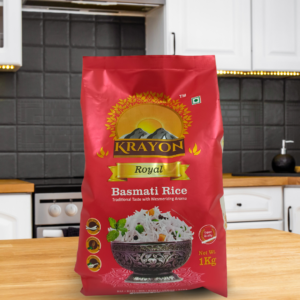How to Check Basmati Rice Quality at Home – Check Quality of rice easily
Want to Check basmati rice quality at home? When it comes to preparing a delicious and delightful rice meal, using quality basmati rice makes all the difference. But in a market full of choices, how can you be sure you’re getting the real deal?
Thankfully, there are a few simple ways to check basmati rice quality at home no need for fancy equipment. Whether you’re buying rice for daily use or special occasions, these practical tips will help you avoid low-grade or adulterated grains and ensure your meals always come out perfect.
1. Look at the Grain Size and Shape for quality basmati
One of the easiest ways to check basmati rice quality at home is by looking closely at the grain. Authentic basmati rice is long and slender. The grains should not be round, too thick, or inconsistent in size. Uniform length is a good sign of quality and proper processing. Good quality basmati rice has a few visible traits that set it apart from regular or mixed varieties.
What Should You Look For?
- Long, slender grains: Authentic basmati rice is known for its length. A typical high-quality grain (like above 8mm) measures over 8.35-8.40 mm in length. If the grains look short or stubby, it’s likely a different or mixed variety.
- Uniformity in size: All the grains should be more or less the same in length and width. Inconsistent size can indicate poor processing or mixing with cheaper varieties.
- No broken pieces: Quality basmati should have minimal broken grains. Too many broken pieces can affect how the rice cooks — leading to a sticky or mushy texture instead of the fluffy, separate grains that basmati is known for.
- No round or overly thick grains: Basmati has a distinct shape — long and thin. If you notice many round or fat grains, it might not be authentic or could be adulterated with other rice types.
- Clean surface: The grains should look dry, free from any powdery substance, and not have any yellow or discolored spots. A powdery surface may indicate artificial polishing or added starch.
If you notice a lot of broken grains or mixed shapes, that rice may not be pure basmati.
2. Smell the Raw Rice to feel quality of rice
Before cooking, good quality basmati rice should have a natural, nutty aroma. This fragrance comes from the aging and natural processing of the grain. If the rice smells musty, sour, or has no smell at all, it may not be genuine or could be mixed with other varieties.
Take a handful of rice and smell it real basmati will always carry a subtle but noticeable aroma even in its raw form.
3. Try the Water Test is an easy way to check basmati rice quality at home
One of the oldest and easiest methods to check if you’re getting quality basmati rice is the water test a simple trick used by home cooks and even experienced rice buyers.
Here’s how to do it:
- Take a small handful (about a spoonful) of uncooked rice.
- Drop it into a transparent glass filled with clean, room-temperature water.
- Let it sit for 2 to 5 minutes without stirring.
This simple method is often enough to tell the difference between quality basmati rice and low quality substitutes.
What Should You Observe?
- Pure basmati rice will slowly sink to the bottom of the glass. This is because genuine basmati is dense, unpolished, and naturally aged — giving it a proper weight and texture.
- If you see grains floating, it usually means the rice is either too light due to polishing, has been mixed with other lower-quality grains, or has been chemically treated to enhance appearance.
- Also, check the clarity of the water. If it becomes cloudy or milky right away, that’s a red flag. It might indicate:
- Use of talc or polishing powder to make the rice appear whiter.
- Starch buildup from improper drying or artificial aging.
- Possible presence of impurities or additives.
4. Cooking a Small Sample is also a great Idea
Cooking is one of the most reliable ways to judge the quality. When cooked properly:
- Basmati rice should expand in length, not width.
- Grains should stay separate, fluffy, and non-sticky.
- The aroma should become even richer.
If the rice becomes sticky or breaks after cooking, it’s likely not high-grade basmati.
5. Check the Packaging Details for Ingredients and length
If you’re buying packaged rice, always check:
- Grain length (good basmati is usually above 8 mm)
- Percentage of broken grains
- Date of packaging (older, aged rice has better aroma)
- Purity percentage
- Any mention of additives or polish
Now that you know how to check basmati rice quality at home, let’s talk about a brand that consistently delivers excellence.
Why Krayon Basmati Rice is a Trusted Name for Quality Basmati Rice
After testing several brands, one name that truly stands out in terms of purity, aroma, and grain length is Krayon Basmati Rice.
Krayon is a leading manufacturer, exporter, and supplier of premium quality basmati rice, especially known for its extra length Basmati one of the most sought-after varieties in both domestic and international markets.
What Makes Krayon’s Basmati Rice Exceptional?
Krayon pays attention to every detail — from sourcing to processing to packaging. Their basmati rice is aged, naturally processed, and rigorously tested to ensure customers get nothing less than perfection.
Our SKUs
Whether you’re a home cook, restaurant owner, or exporter, Krayon provides a consistent and authentic experience with every grain.





